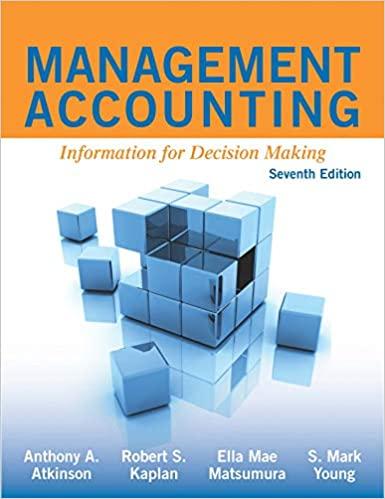AD produces multiple products for all three markets. However, there are two products that comprise almost 90%
Question:
AD produces multiple products for all three markets. However, there are two products that comprise almost 90% of AD’s sales. These are the Videographer (cinematography) and the Crop Scanner (Farming). Both products are sold to retail customers in North America and Europe through independent but factory-trained sales agents, who are paid a commission of 10% of sales for each unit sold.
The Videographer and Crop Scanner sell for $3,999 and $5,199, respectively. The budgeted direct materials costs are 45% of the budgeted selling price for the Videographer and 52% of the budgeted selling price for the Crop Scanner. The sum of variable labor, variable manufacturing, and variable shipping costs for both models are budgeted as 21% of the selling price for both models. Fixed manufacturing costs and fixed selling general and administrative costs were budgeted as $2.2 million and $1.4 million, respectively.
During the most recent year, AD planned on selling 2,500 Videographers and 1,500 Crop Scanners. Industry-projected total sales in the two markets were 64,000 units for Videographers and 32,000 units for Crop Scanners. However, AD’s sales of Videographers amounted to only 1,800 units (industry total sales were a disappointing 48,000 units), reflecting uncertainty about whether governments would impose legal restrictions on using drones for videography. However, Crop Scanner sales amounted to 2,400 units (total industry sales were 42,000 units), following a highly regarded agronomist’s series of farm journal articles promoting the potential for drones to increase farm productivity.
The company controller reported that the actual direct materials costs for the Videographers and the Crop Scanners were, respectively, 44% and 54% of the actual selling price, and actual total of other variable costs for Videographers and Crop Scanners were 22% and 18% of the actual selling price, respectively. Actual fixed manufacturing costs and fixed selling, general, and administrative costs were $2.3 million and $1.6 million, respectively.
Required
(a) Compute the Ancaster Drones’:
(i) Static budget income
(ii) Flexible budget income
(iii) Actual income
(iv) Planning variance
(v) Flexible budget variance
(b) Using the contribution margin approach, compute each of the following and explain the meaning of each in everyday language:
(i) The total sales mix variance
(ii) The total sales quantity variance
(iii) The market share variance for Ancaster Drones
(iv) The market size variance for Ancaster Drones
Step by Step Answer:

Management Accounting Information For Decision Making
ISBN: 9781618533517
7th Edition
Authors: Anthony A. Atkinson





